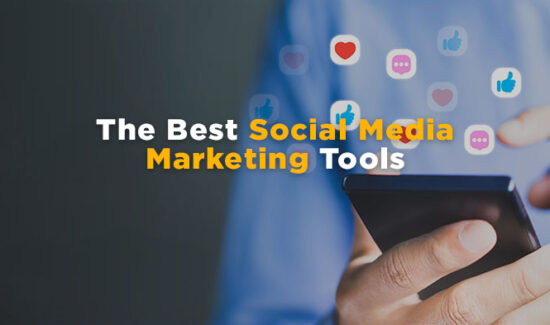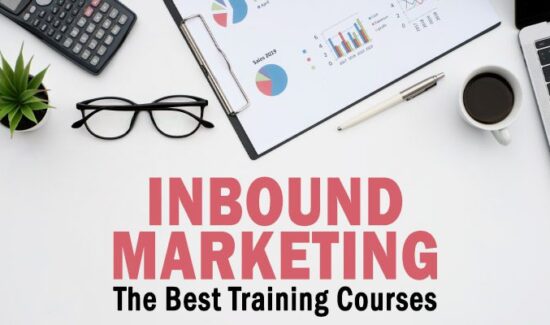7 Ways to Tailor Your Tech Stack for Demand Generation


As part of Solutions Review’s Contributed Content Series—a collection of articles written by industry thought leaders in maturing software categories—Margaret Wise, the Chief Growth Officer at ClickDimensions, shares insights on some key considerations marketers should make when creating a tech stack for their company.
Demand generation is a term deeply ingrained in today’s marketing vocabulary and gaining importance for marketers and sales teams looking to recoup revenue lost during the pandemic. It’s an umbrella term covering all marketing efforts from each touchpoint in the buyers’ journey—from anonymous website visitors to upselling customers. It’s a data-driven marketing strategy designed to nurture critical prospects over their lifetime.
Demand gen marketers focus on the entire revenue cycle: attracting leads, converting leads to sales opportunities, and converting these opportunities into sales. Marketers need to use varied demand-gen tactics to bring something of value to each stage of the buyer’s journey.
But what happens when the buying journey gets flipped on its head? Over the last few years, buying behavior has shifted to digital channels, and the journey has taken on a cyclical path instead of a simple, linear process. These changes have, in turn, moved the types of tech stacks unified sales and marketing teams need to be successful. Today, these functions need to be supported by tech investment that boosts demand generation, fills the sales pipeline, and drives the bottom line.
Here are some elements to consider.
1) Integrated CRM & Marketing Automation
Marketing automation plays a significant role in any strategy. It manages the marketing process and multifunctional campaigns across many channels automatically. By leveraging this technology, businesses can target customers with automated messages via email, web, social, and text. From a demand gen perspective, this is a valuable way to reach and educate many prospects at once and explain why a challenge they face is significant enough for them to invest in a solution.
By taking it one step further and integrating marketing automation into your CRM, you gain access to all your contacts and data and benefit from greater productivity. These tools help marketers streamline communication with consistent messaging, curb data management issues, and analyze customer behavior more effectively.
2) Social Marketing
A social marketing tool should be next in your revenue tech stack arsenal as it can help save time and maximize social media ROI. This technology enables marketers to accomplish several tasks, including scheduling and managing content across social networks, sharing meaningful content, monitoring and engaging in relevant conversations, resolving customer issues, and measuring and optimizing results for greater ROI.
Effective marketers also use social media as a lead-generation channel. Attribute social interactions to unique leads and contacts in your CRM. Then, connect the leads generated through these channels with the sales pipeline and revenue. Use the attributed social activity as a trigger for marketing automation, lead scoring, and workflows.
3) Data Cleansing & Enrichment
Software that helps marketing and sales teams clean data can serve multiple purposes. It allows you to uncover the current state of your data quality so you can make informed decisions around your data gathering strategy. It also provides sales and marketing teams with a clearer understanding of customers, informing better business strategies.
Quality data is critical for understanding your prospects and serving them with the best content to keep them engaged and progressing through the sales funnel. Teams should monitor lead feedback to determine whether outreach strategies meet customer needs. According to Gartner, this looks like reviewing lead nurture track performance data regularly and adjusting accordingly.
4) Data Visibility & Intelligent Dashboards
While data is critical, it’s only as valuable as its ability to tie back to specific activities and tell a story. This is why a marketing dashboard or other holistic data visibility platform should be part of every revenue tech stack. These platforms help marketers understand what’s working and what isn’t by providing a comprehensive view of sales and marketing performance across all activities—connecting those activities directly to the sales pipeline and revenue. Use this technology to measure campaign effectiveness and report on revenue and demand generation tactics.
5) Sales Enablement
Sales enablement is the strategic, ongoing, and cross-functional process of providing sales teams with the content, information, training, and technology they need to compete today and effectively engage with buyers throughout their journey. While this process goes beyond the purview of marketing, relevant content is the fuel for sales enablement from a demand generation perspective. Think data sheets, case studies, testimonials, email templates, gated content, and battle cards. Adding a content management system to your tech stack can help support content efforts, drive unification between marketing and sales teams, and provide sales with the tools to excel.
6) Account-Based Marketing
ABM is the strategy of defining the target list of accounts you want to approach and creating the channels, messaging, and content to communicate with them in a personalized way. Rather than marketing and sales speaking to a persona, you go deeper and speak at the brand and individual levels. This method is highly successful, with 87 percent of ABM marketers saying their initiatives outperform other marketing investments.
When building the ABM components of your tech stack, it’s essential to consider how the solution will help you better achieve your goals of attracting, engaging, converting, and measuring your target accounts. The right technology can help you execute ABM strategy from account selection to measurement.
7) AI for Sales Coaching
Lastly, artificial intelligence must have a place in the modern tech stack. Similar to lead scoring processes, sales teams can leverage AI to understand account and opportunity health. In turn, sales leaders can better understand the pipeline based on the digital signals and responses in buyer behavior. AI can help teams manage the pipeline and be an effective coaching tool for salespeople, proactively signaling next-best actions, accounts that need attention, and steps that haven’t been taken in defined timeframes.
Building the Revenue Tech Stack
Building an effective tech stack can seem like a daunting task. After all, the marketing technology landscape alone has roughly 10,000 solutions—up 24 percent from 2020. However, this influx of technology and tools in the industry empowers marketers to do more with less, which is ideal for teams still recovering from the impact of the pandemic and rebuilding the pipeline.
Marketing and sales leaders ready to move forward and develop demand-gen strategies should view technology as an extension of their team. They need to evaluate solutions based on how they integrate, their insights, and the level of support they offer. From there, teams can build a tech stack to achieve the ultimate demand generation goal—revenue.























